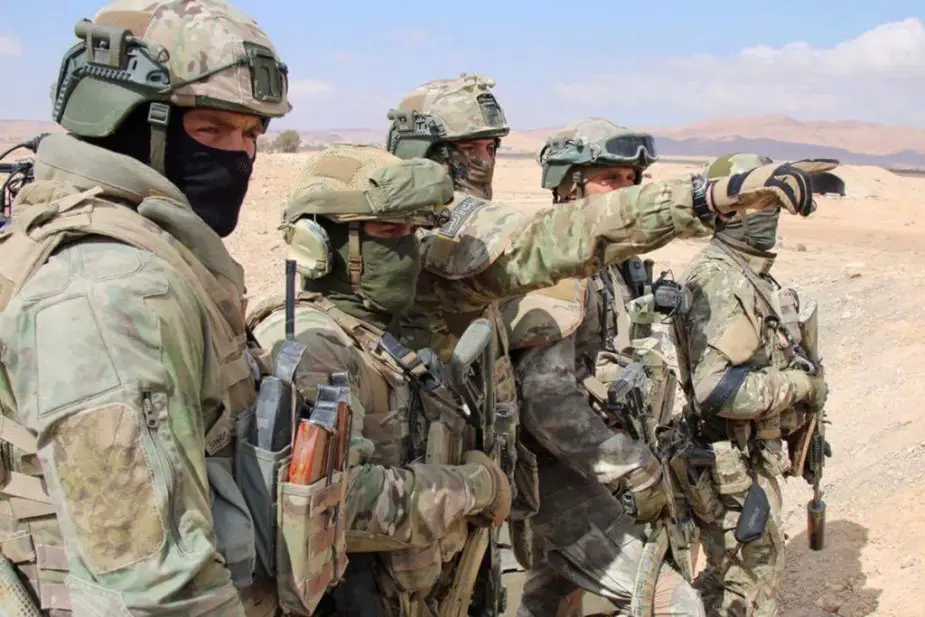Syrian combat tests Russian commandos - part 1
The Syrian combat tested Russian commandos for readiness to XXI century wars. The Syrian campaign differs from the armed conflicts of the past decades by a rapidly changing situation and highly intensive engagement by all parties of new technical means and warfare techniques. All engaged forces, including commandos had to adapt to new conditions. Previously, special task forces were mostly used for deep reconnaissance and sometimes as infantry, but in Syria they had to engage in various new missions, an army officer who has recently returned from Syria told the Izvestia daily.

Russian commandos in Syria (Picture source: Russian MoD)
A tactical innovation in Syria is that commandos do not have to infiltrate adversary rear. They can operate without crossing the frontline. "Previously, we engaged in a narrow range of missions and targeted operations in adversary rear. Now, new reconnaissance means allow operating from own territory. The Syrian experience confirmed it. It is no longer necessary to send a group of scouts to adversary rear for 10-20 days and risk losing them. The work is more accurate now and human resource is not spent. Commandos are losing fewer people," he said.
Previous training programs for commandos were based on World War Two, Afghan and Chechen war experience. Cadets were trained to operate with minimum gear, weapons and delivery means. A future officer should not depend on the presence of gear and weapons. "There was no money and we were trained to cover major distances on foot. The picture has completely changed in ten years. There are new arms, outfit, and combat hardware," the officer said.
The previous lack of funds however provided an edge to commandos in service. Officers say they can operate with insufficient equipment, only a compass and a map. Foreign commandos mostly operate technologies and it would be difficult for them to accomplish missions the way it was done ten years ago. Training of Russian commandos was universal. They can approach a facility by GPS or GLONASS, shoot a picture, process and transmit it to the command via satellite. But they can also find the facility with the help of a map and transmit information by ordinary communication means. "Previously, we used old experience. Now, several new components are introduced, even into the best techniques. The tactic is considered as a construction set to provide a model of actions for a specific situation. There can be no set pattern. Commandos are rapidly adapting to new combat techniques and create them themselves. We dictate the rules of the game in most cases," the officer said.
Frontline operations provide for the use of transport vehicles. Russian commandos have never been so mobile as in Syria. They are armed with Tiger vehicles and quads. They can bring a four-men team to any frontline section and "unleash a small war there," the officer said. The team can exhaust the adversary and destabilize several kilometers of the frontline.
Light vehicles can transport heavy arms - guided antitank missiles, automatic grenade launchers and other guns. Classical scouts on foot do not enjoy such a capability. It takes foot-borne commandos a lot of time to reach the destination. At dawn they often have to stop moving to avoid detection. But modern drones with heat seekers and radars can detect even a camouflaged team. "Vehicles help you quickly arrive, do the job and escape. It makes minimum effort while the adversary is constantly on alert. Thus, you can prepare a frontline section for future operations in a week or two. In Syria a dozen of commandos on several vehicles or quads can "soften" the frontline. The adversary will be constantly on alert, will get tired and it would be easier for advancing Syrian troops to crush it," the officer said.


























